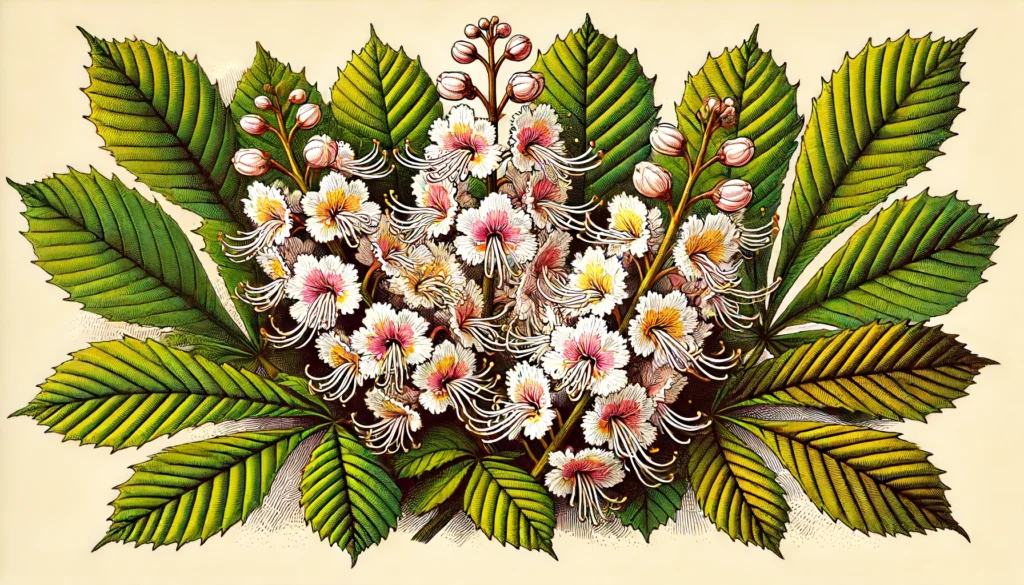

Home » Cat Plants » Buckeye Plant: A Guide to Cat Safety

The Buckeye (Aesculus spp.) is a toxic plant for cats. It contains glycosides and saponins that can cause moderate to severe poisoning. These compounds primarily affect the gastrointestinal and nervous systems. Buckeye trees are commonly found in parks, gardens, and natural areas across North America.
Ingestion may cause mild gastrointestinal upset, but is generally not life-threatening.
Ingestion can result in mild symptoms like vomiting, diarrhea, or drooling. Rarely fatal but may require veterinary care.
Eating these plants can lead to more pronounced symptoms like abdominal pain, lethargy, or difficulty breathing. Veterinary intervention may be necessary.
Ingesting even small amounts can cause severe symptoms like organ damage, seizures, or cardiac failure without rapid treatment.
All parts of these plants are extremely poisonous to cats and can quickly lead to death, even with immediate veterinary care.
** Please note: Please note that toxicity level can vary based on the amount ingested and the specific cat. It's always best to keep these plants completely inaccessible to cats and seek immediate veterinary care or call the poison hotline if you suspect your cat has ingested any part of a toxic plant.
If a cat ingests any part of the Buckeye plant, it may experience various symptoms related to gastrointestinal distress and neurological effects. Common signs include vomiting, diarrhea, abdominal pain, lethargy, incoordination, muscle tremors, seizures, and paralysis. The severity of symptoms depends on the amount consumed.
If you suspect your cat has ingested the Buckeye plant, it is crucial to seek veterinary attention immediately. The veterinarian will likely perform a physical examination, obtain a detailed history of the incident, and potentially conduct blood tests and urinalysis. Based on the findings and your cat’s symptoms, they may diagnose plant poisoning or toxicity caused by the Buckeye. The veterinarian may also rule out other potential causes, such as gastrointestinal disorders or neurological conditions.

A: Yes, cats can be allergic to Buckeye. Symptoms of an allergic reaction may include itching, sneezing, and skin irritation.
A: Yes, Buckeye is highly toxic to cats. Ingesting any part of this plant can cause severe symptoms and can be fatal if not treated promptly.
A: Symptoms of Buckeye poisoning in cats include vomiting, diarrhea, drooling, tremors, seizures, and difficulty breathing. Immediate veterinary care is crucial if ingestion is suspected.
A: To prevent contact, ensure that Buckeye is not present in your home or garden. Keep your cat indoors or monitor outdoor activities closely to avoid exposure.
A: If your cat ingests Buckeye, contact your veterinarian immediately. Do not induce vomiting unless instructed by a veterinary professional. Immediate medical attention is necessary.
A: Buckeye trees are more commonly found in wild areas and parks rather than home gardens. However, if you do have this plant in your vicinity, it is important to ensure it is kept out of reach of cats to prevent accidental ingestion.
The Buckeye (Aesculus) is a genus of trees and shrubs native to the temperate regions of North America and Eurasia. The name “buckeye” is derived from the resemblance of the seeds to the eye of a buck (male deer). Buckeye trees have been cultivated for their ornamental value, with showy flowers and distinctive fruit capsules. However, their toxicity has been recognized for centuries, and Native Americans used the seeds as a fish poison due to their potent compounds.
Please note: The information shared in this post is for informational purposes only and should not be considered as veterinary medical advice.
🐾 A hilarious or heart-melting cat video
🐾 Our latest paws-on review of a cool cat toy